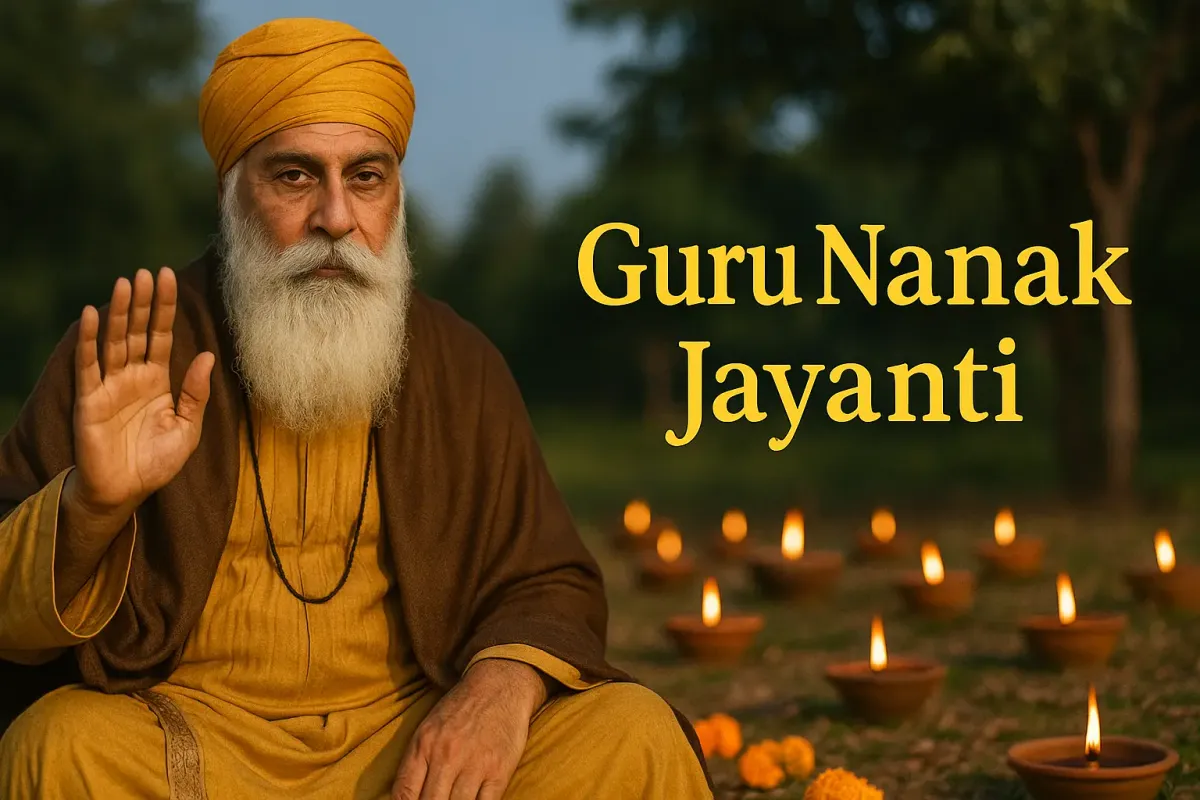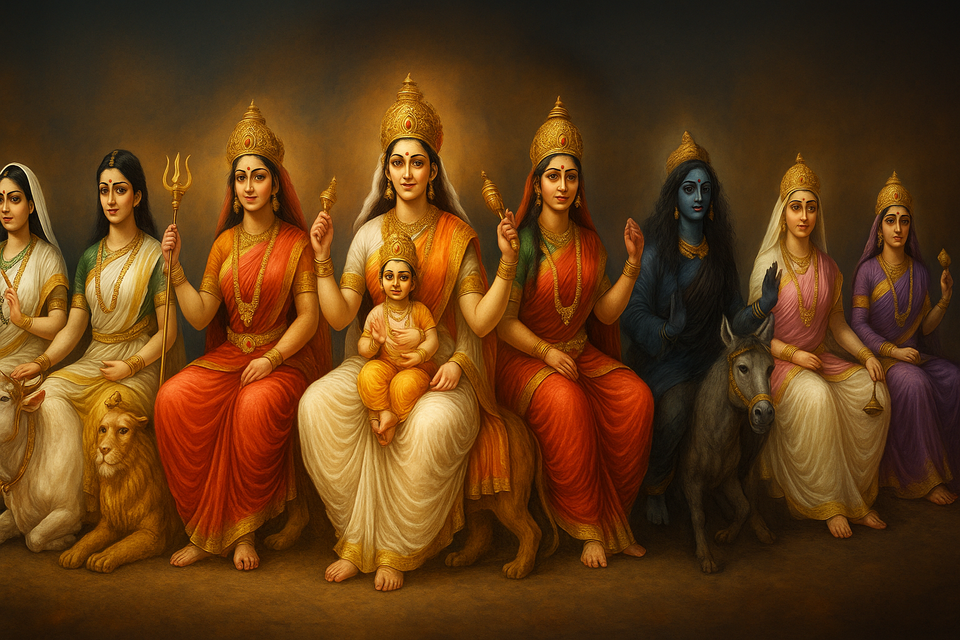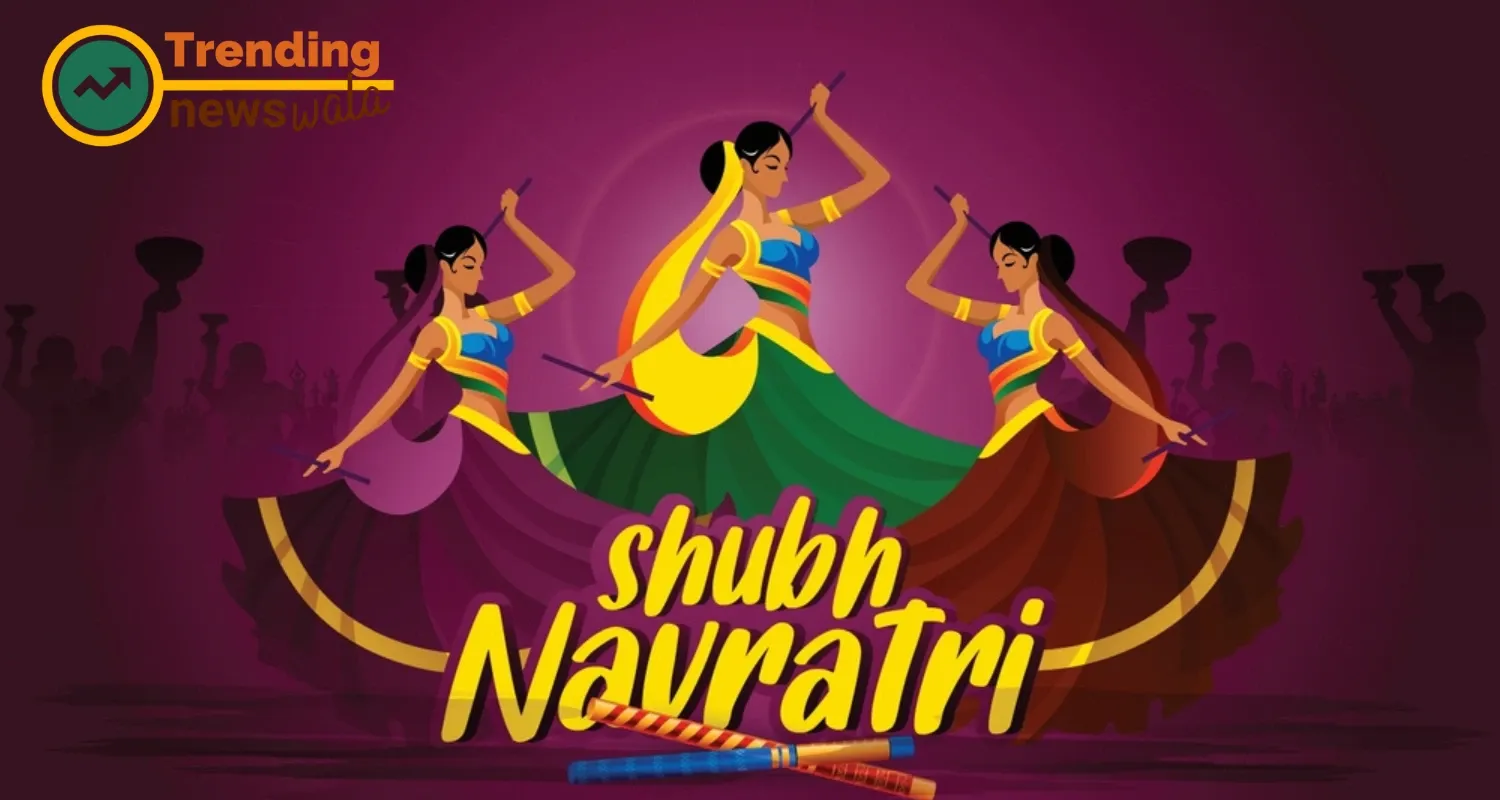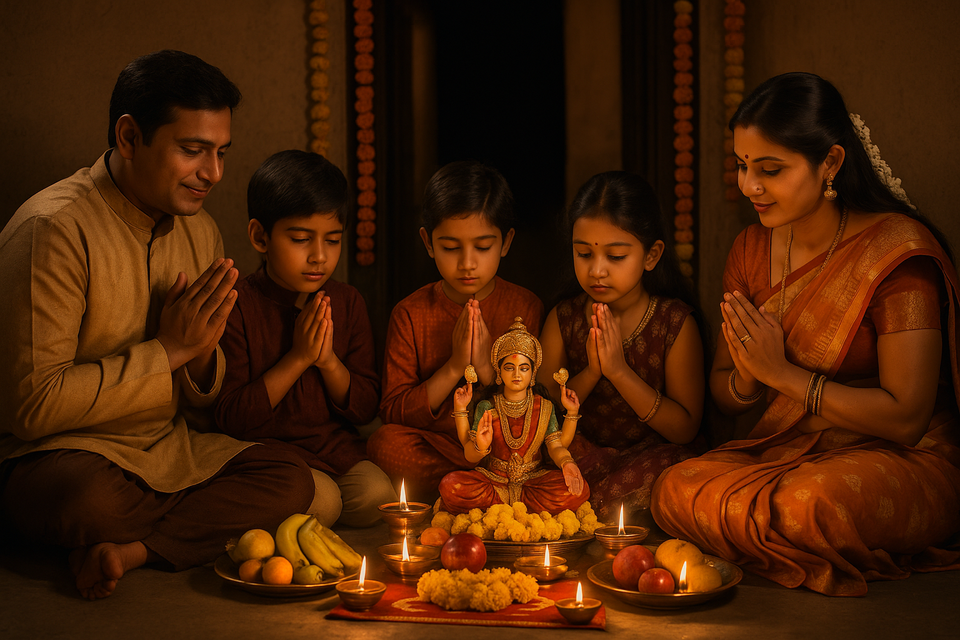Guru Nanak Jayanti: Celebrating the Light of Wisdom and Equality 🌟
Celebrate Guru Nanak Jayanti, honoring the founder of Sikhism! Learn its history, rituals, and modern relevance. Join vibrant festivities in India, from Nagar Kirtans to langars, and embrace equality and compassion. 🎉

Guru Nanak Jayanti, also known as Gurpurab, is a sacred Sikh festival celebrating the birth anniversary of Guru Nanak Dev Ji, the founder of Sikhism and the first of the ten Sikh Gurus. Observed on the full moon day (Purnima) of the Kartik month in the Hindu lunar calendar, typically in October or November, Guru Nanak Jayanti is a time of devotion, reflection, and community service. Marked by vibrant processions (Nagar Kirtans), prayers, and langars (community feasts), Guru Nanak Jayanti embodies Guru Nanak’s teachings of equality, compassion, and oneness with God. This festival holds profound significance for Sikhs worldwide and resonates with people of all faiths inspired by his universal message.
For a deeper understanding of India’s rich festival traditions, explore Ancient Festivals of India.
Historical Background of Guru Nanak Jayanti 📜
Guru Nanak Jayanti commemorates the birth of Guru Nanak Dev Ji, born on April 15, 1469 CE, in Rai Bhoi Di Talwandi (now Nankana Sahib, Pakistan). Historical accounts, including the Janamsakhis (biographical narratives), describe Guru Nanak’s life as a spiritual journey that laid the foundation for Sikhism. Born into a Hindu family, Guru Nanak rejected caste distinctions and religious dogma from a young age, emphasizing devotion to one God (Ik Onkar) and service to humanity.
Guru Nanak’s travels (Udasis), spanning over 28,000 kilometers across South Asia and the Middle East, spread his message of equality, compassion, and unity. He engaged with diverse communities, from Hindu pandits to Muslim sufis, fostering interfaith dialogue. His teachings, recorded in the Guru Granth Sahib, the Sikh holy scripture, include 974 hymns that guide Sikhs today. Guru Nanak appointed Guru Angad Dev Ji as his successor, establishing the Guru tradition that continued for nine more Gurus.
Guru Nanak Jayanti gained prominence as a major Sikh festival under Guru Amar Das, the third Guru, who formalized community celebrations. Today, it is a public holiday in India, especially in Punjab, Haryana, and Delhi, reflecting Guru Nanak’s enduring legacy. The festival’s historical significance underscores its role as a beacon of spiritual and social reform. 🕉️
Mythological and Spiritual Significance of Guru Nanak Jayanti ✨
Guru Nanak Jayanti holds profound spiritual and philosophical importance, embodying the core principles of Sikhism. Here are key aspects of its significance:
- Teachings of Equality: Guru Nanak’s principle of Ik Onkar (One Supreme Reality) rejects divisions of caste, creed, or gender, making Guru Nanak Jayanti a celebration of universal brotherhood.
- Three Pillars of Sikhism: Guru Nanak’s teachings—Naam Japna (meditating on God’s name), Kirat Karni (honest living), and Vand Chakna (sharing with others)—are central to Guru Nanak Jayanti, inspiring ethical living.
- Devotion to God: Guru Nanak emphasized a direct connection with God through devotion and humility, free from rituals, a theme celebrated during Guru Nanak Jayanti.
- Interfaith Harmony: His dialogues with diverse faiths promote tolerance, making Guru Nanak Jayanti a festival that resonates beyond Sikhism, fostering unity.
- Spiritual Awakening: The festival encourages devotees to reflect on Guru Nanak’s hymns, such as Japji Sahib, to seek inner peace and enlightenment during Guru Nanak Jayanti.
The spiritual essence of Guru Nanak Jayanti lies in its call to live with compassion, truth, and service, as Guru Nanak said: “Truth is high, but higher still is truthful living.” 🌼
For insights into India’s sacred sites, visit Shiva Temples In India.
Cultural Importance of Guru Nanak Jayanti 🎭
Guru Nanak Jayanti is a cultural milestone that celebrates Sikh heritage and universal values. Its cultural significance includes:
- Community Service: Langars during Guru Nanak Jayanti embody Guru Nanak’s vision of equality, where people of all backgrounds share free meals, fostering social harmony.
- Musical Tradition: Sikh devotional music (Gurbani Kirtan), based on Guru Nanak’s hymns, is a highlight of Guru Nanak Jayanti, showcasing Punjab’s rich musical legacy.
- Artistic Expression: Nagar Kirtans feature colorful floats, martial arts displays (Gatka), and banners, reflecting Sikh culture’s vibrancy during Guru Nanak Jayanti.
- Educational Impact: Schools and gurdwaras organize events to teach Guru Nanak’s life and principles, inspiring youth to embrace compassion and equality.
- Global Reach: The Sikh diaspora celebrates Guru Nanak Jayanti in countries like the UK, Canada, and the USA, promoting Sikh culture and values worldwide.
The cultural vibrancy of Guru Nanak Jayanti lies in its ability to blend spirituality with community spirit, making it a cherished festival for Sikhs and beyond. 🌈
Rituals and Traditions of Guru Nanak Jayanti 🛕
Guru Nanak Jayanti is marked by heartfelt rituals that emphasize devotion, service, and unity. These traditions, observed over three days, create a sacred and festive atmosphere. Here’s a detailed look at the key rituals of Guru Nanak Jayanti:
1. Akhand Path (Continuous Reading) 📖
The festival begins with Akhand Path, a 48-hour continuous reading of the Guru Granth Sahib in gurdwaras and homes. Devotees take turns reading, ensuring the scripture is recited without pause, honoring Guru Nanak’s teachings during Guru Nanak Jayanti.
2. Nagar Kirtan (Processions) 🎶
Vibrant Nagar Kirtans are a highlight of Guru Nanak Jayanti, with devotees carrying the Guru Granth Sahib on a decorated float (Palki Sahib). Processions feature kirtan singing, Gatka performances, and chants of Waheguru Ji Ka Khalsa, spreading Guru Nanak’s message of unity.
3. Prabhat Pheris (Morning Hymns) 🌅
Early morning processions, known as Prabhat Pheris, take place in the weeks leading up to Guru Nanak Jayanti. Devotees sing hymns from the Guru Granth Sahib while walking through neighborhoods, creating a devotional ambiance.
4. Gurbani Kirtan and Katha 🙏
Gurdwaras host Gurbani Kirtan sessions, where musicians sing Guru Nanak’s hymns, and Katha (discourses) narrate his life and teachings. These sessions inspire spiritual reflection during Guru Nanak Jayanti.
5. Langar (Community Feasts) 🍲
Free community meals, or langars, are organized during Guru Nanak Jayanti, where volunteers serve vegetarian food like dal, roti, and kheer to all, regardless of status. This ritual embodies Guru Nanak’s principle of equality.
6. Lighting Lamps and Decorations 🪔
Gurdwaras and homes are illuminated with lamps and adorned with flowers and flags during Guru Nanak Jayanti, symbolizing the light of Guru Nanak’s wisdom dispelling ignorance.
7. Seva (Selfless Service) 🤝
Devotees engage in seva, such as cleaning gurdwaras, serving in langars, or helping the needy, reflecting Guru Nanak’s emphasis on selfless service during Guru Nanak Jayanti.
8. Charity and Donations 🎁
Inspired by Guru Nanak’s teachings, devotees donate food, clothes, or money to the poor or gurdwaras, promoting compassion and goodwill during Guru Nanak Jayanti.
9. Recitation of Japji Sahib 📜
Devotees recite Japji Sahib, Guru Nanak’s morning prayer, to start Guru Nanak Jayanti with spiritual focus, seeking guidance and inner peace.
These rituals make Guru Nanak Jayanti a vibrant celebration of devotion, equality, and community spirit. 🎊
Celebrations Across India and Beyond 🌍
Guru Nanak Jayanti is celebrated with fervor across India, particularly in Punjab, Haryana, Delhi, and Uttar Pradesh, and among the global Sikh diaspora. Here’s how different regions mark the festival:
- Punjab: Amritsar, home to the Golden Temple (Harmandir Sahib), is the epicenter of Guru Nanak Jayanti, with grand Nagar Kirtans, Akhand Path, and langars. The temple is illuminated, drawing lakhs of devotees.
- Haryana: Chandigarh and Kurukshetra host vibrant celebrations, with gurdwaras organizing kirtans and community feasts during Guru Nanak Jayanti.
- Delhi: Gurdwaras like Gurudwara Bangla Sahib and Gurudwara Sis Ganj Sahib hold massive processions and prayers, uniting diverse communities for Guru Nanak Jayanti.
- Uttar Pradesh: Lucknow and Kanpur celebrate with Prabhat Pheris and langars, blending Sikh and local traditions during Guru Nanak Jayanti.
- Global Celebrations: Sikh communities in the UK (Southall), Canada (Surrey), USA (Yuba City), and Australia (Melbourne) organize Nagar Kirtans, kirtans, and charity drives, with gurdwaras hosting virtual events for Guru Nanak Jayanti.
The festival’s global reach underscores Guru Nanak’s universal message, fostering unity across borders during Guru Nanak Jayanti. 🌏
Modern Relevance of Guru Nanak Jayanti 🌐
In today’s world, Guru Nanak Jayanti remains a powerful reminder of equality, compassion, and spiritual wisdom, resonating with modern values. Its contemporary significance includes:
- Social Equality: Guru Nanak’s rejection of caste and gender discrimination inspires movements for social justice, making Guru Nanak Jayanti relevant in addressing inequality.
- Environmental Stewardship: His teachings on respecting nature align with modern sustainability efforts, with langars adopting eco-friendly practices during Guru Nanak Jayanti.
- Mental Wellness: Reciting Gurbani and participating in kirtans promote mindfulness, aligning with global mental health trends during Guru Nanak Jayanti.
- Community Service: Seva and langars support marginalized groups, reflecting modern philanthropy and social welfare initiatives during Guru Nanak Jayanti.
- Digital Engagement: Social media campaigns, live-streamed kirtans, and virtual Nagar Kirtans amplify Guru Nanak Jayanti’s reach, connecting the global Sikh community.
Sikh organizations leverage Guru Nanak Jayanti to promote education, charity, and interfaith dialogue, ensuring its enduring appeal as of June 5, 2025. 📱
How to Celebrate Guru Nanak Jayanti at Home 🏠
Planning to celebrate Guru Nanak Jayanti? Here’s a step-by-step guide for a meaningful celebration:
- Set Up a Prayer Space: Clean your home and create an altar with a picture of Guru Nanak or the Guru Granth Sahib, decorated with flowers, candles, and incense.
- Recite Japji Sahib: Start Guru Nanak Jayanti with the morning prayer Japji Sahib, available in Gurmukhi or translations, to seek spiritual guidance.
- Play Gurbani Kirtan: Stream or sing Sikh hymns from the Guru Granth Sahib, creating a devotional atmosphere for Guru Nanak Jayanti.
- Read Guru Nanak’s Life: Share stories from the Janamsakhis with family, reflecting on his teachings of equality and service during Guru Nanak Jayanti.
- Prepare Langar Food: Cook vegetarian dishes like dal, roti, or kheer and share with family or neighbors, embodying the spirit of langar.
- Engage in Seva: Perform acts of service, such as helping at a local gurdwara, donating to charity, or cleaning your community space, honoring Guru Nanak Jayanti.
- Light Lamps: Light diyas or candles at home to symbolize Guru Nanak’s wisdom dispelling darkness during Guru Nanak Jayanti.
- Join Virtual Events: Participate in online kirtans, Akhand Path readings, or webinars hosted by gurdwaras worldwide for Guru Nanak Jayanti.
- Share Greetings: Send Guru Nanak Jayanti wishes via WhatsApp, Instagram, or cards, with messages like “May Guru Nanak’s light guide you toward peace and compassion!”
These steps ensure a heartfelt and authentic Guru Nanak Jayanti celebration at home. 🎈
Practical Information for Visitors 🌍
Planning to experience Guru Nanak Jayanti in India? Here’s what you need to know as of June 5, 2025:
- Best Places to Visit: Amritsar (Golden Temple), Chandigarh (Gurudwara Nada Sahib), Delhi (Gurudwara Bangla Sahib), or Anandpur Sahib for vibrant Guru Nanak Jayanti celebrations.
- Timing: Guru Nanak Jayanti falls on Kartik Purnima (e.g., November 15, 2025). Check the Sikh calendar for exact dates.
- How to Reach:
- By Air: Amritsar (Sri Guru Ram Dass Jee Airport), Chandigarh (Chandigarh Airport), or Delhi (Indira Gandhi International Airport) are well-connected.
- By Train: Amritsar Junction, Chandigarh Junction, and New Delhi Railway Station are major hubs.
- By Road: Highways connect these cities with buses and taxis.
- Accommodation: Book hotels or guesthouses in advance, especially in Amritsar, due to high demand. Options range from budget stays to luxury hotels like Taj Swarna (Amritsar).
- Etiquette: Cover your head, remove footwear at gurdwaras, and respect langar customs during Guru Nanak Jayanti events.
Visiting during Guru Nanak Jayanti offers a unique glimpse into Sikhism’s spiritual and cultural vibrancy. 🛫
Conclusion 🌄
Guru Nanak Jayanti is a radiant celebration of wisdom, equality, and compassion, honoring Guru Nanak Dev Ji’s timeless teachings. From Akhand Path and Nagar Kirtans to langars and seva, Guru Nanak Jayanti offers a rich tapestry of rituals that unite communities worldwide. Its historical, spiritual, and modern significance makes it a cherished festival that inspires devotion, service, and unity. Whether you’re a Sikh seeking spiritual renewal or a visitor eager to explore Sikh heritage, Guru Nanak Jayanti promises an enriching experience. Embrace the light of Guru Nanak’s wisdom and celebrate Guru Nanak Jayanti with joy and reverence! 🪔





